The Ultimate Guide to Creating SEO Content Briefs That Rank
Learn how to create SEO content briefs that drive rankings with key elements like keyword research, structure, and competitor analysis.

Have you ever wondered why some websites rank higher on Google than others?
The secret often lies in effective Search Engine Optimization (SEO).
In the digital world, SEO is not just an option; it's an important component for any successful marketing strategy. It helps your website appear at the top of search results when potential customers are looking for services or products like yours. This visibility leads to more traffic, and more traffic can mean more sales.
By aligning your content with SEO principles through a well-crafted brief, you can ensure that your digital content is not only reader-friendly but also optimized for search engines, boosting your chances of ranking well and reaching your target audience effectively.
Understanding SEO Content Briefs
What is an SEO Content Brief?
Think of an SEO content brief as a detailed plan for a specific piece of content. It tells the content creator exactly what to write about, how to structure the information, and which keywords to include. This plan makes sure that the content not only appeals to readers but also follows SEO rules to improve its visibility on search engines.
Why Are SEO Content Briefs Important? Using an SEO content brief ensures that the content you produce is focused, coherent, and strategically aligned with your SEO goals. For instance, if you want to rank for keywords related to "homemade ice cream," the content brief would include these keywords and related terms, guiding the writer on how to incorporate them naturally within the content.
An SEO content brief aligns directly with broader SEO strategies by:
- Targeting Specific Goals: Whether it’s increasing traffic, generating leads, or educating customers, the brief specifies the goal of each piece of content.
- Incorporating Keywords: It identifies which keywords are important for your business and shows how to use them effectively.
- Structuring for SEO: The brief advises on using headers, images, and other elements that help boost SEO.
- Enhancing Readability: It ensures the content is easy to read and engage with, which is a factor in how search engines rank pages.
In simple terms, an SEO content brief is like a recipe for baking a cake. It contains all the ingredients (keywords, structure, objectives) you need and the steps on how to mix them properly so that the final product (your content) turns out perfect and tastes great to both your audience and search engines.
Keyword Research

Keywords are the words and phrases that people type into search engines when they're looking for information. By identifying and using the right keywords in your content, you make it easier for search engines to understand what your page is about and show it to the right people.
This means that if you choose your keywords wisely, you're more likely to attract visitors who are interested in what you have to offer. This is essential not just for traffic but for reaching the audience most likely to engage with your content and convert into customers.
Tools and Techniques for Effective Keyword Research:
- Keyword Research Tools: Tools like Google Keyword Planner, Ahrefs, and SEMrush can help you discover what terms your audience is searching for, how often they're searching for these terms, and how competitive these terms are. These tools provide insights that help you select keywords that are relevant to your content and have a good balance of search volume and competitiveness.
- Search Intent Understanding: It’s crucial to understand why someone would be searching for a particular keyword. Are they looking to buy something, or are they just looking for information? This understanding will help you create content that meets their needs, whether that's an informative blog post or a product page.
- Long-Tail Keywords: These are longer and more specific keyword phrases that visitors are likely to use when they're closer to making a purchase or when they're using voice search. They may have lower search volumes, but they're often less competitive and more targeted, leading to higher conversion rates.
- Analyzing Competitors: See what keywords your competitors are ranking for. This can give you ideas for keywords you might not have considered and help you understand the competitive landscape.
- Keyword Placement: Once you've chosen your keywords, it’s important to place them strategically within your content. This includes the title, headers, opening paragraphs generator, and meta descriptions to ensure they are noticed by search engines but still feel natural to readers.
On-Page Optimization Techniques
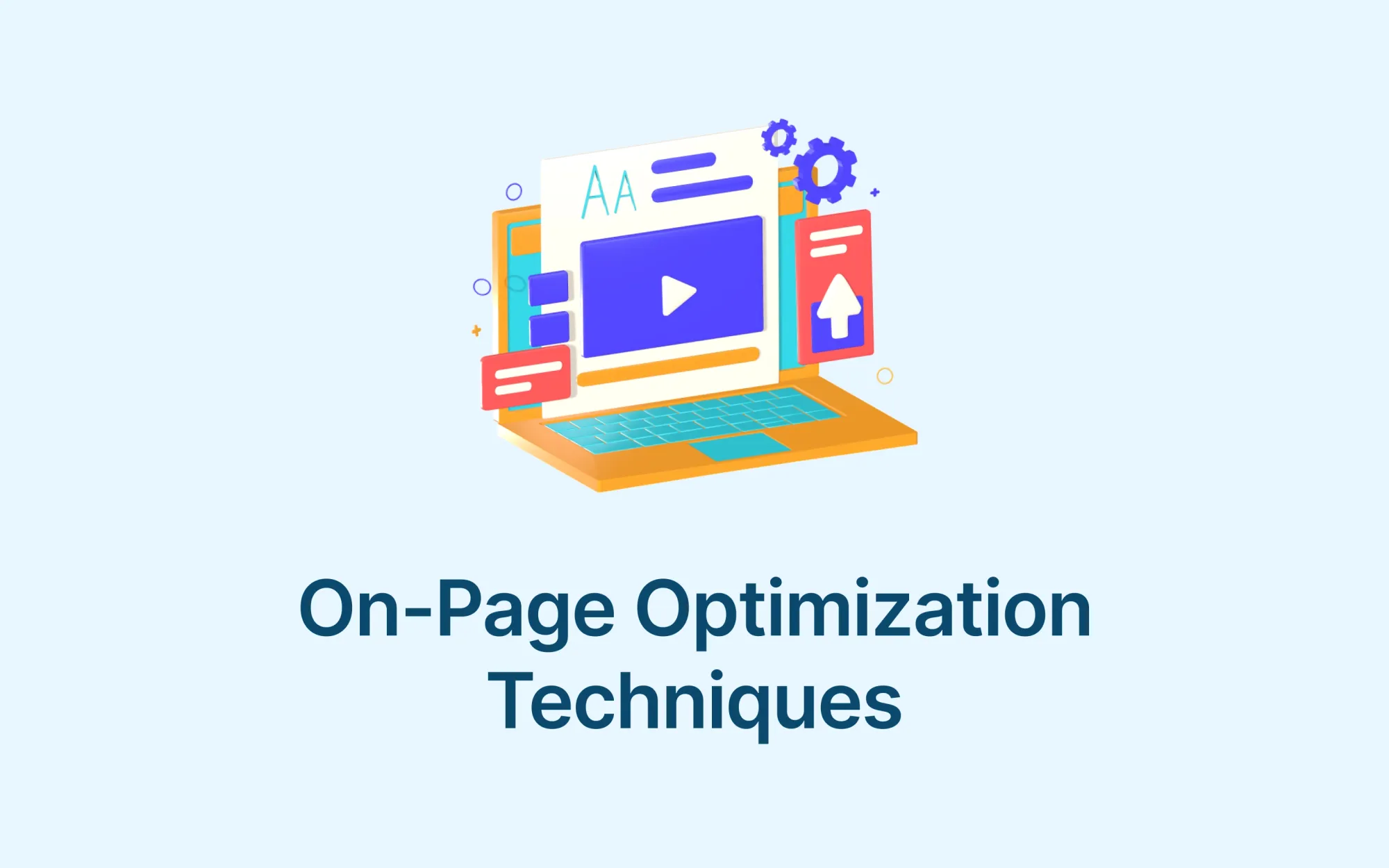
What is On-Page Optimization and Why Is It Important?
On-page optimization involves fine-tuning the elements on your website's pages to make them more attractive to search engines and users. This is crucial because it helps search engines understand your content better and determine how relevant it is to users' queries. By improving this relevance, your pages are more likely to rank higher in search results, attracting more visitors.
The Role of Meta Tags: Title, Description, and Headers
- Title Tags: These are the clickable headlines that appear in search results and are one of the most critical factors in SEO. A well-crafted title tag should include your main keyword and be enticing enough to encourage people to click through to your website.
- Meta Descriptions: While these don’t directly impact search engine rankings, they are important for user click-through rates. A good meta description provides a concise summary of the webpage’s content and should also include relevant keywords to show users that the page contains the information they're looking for.
- Headers (H1, H2, H3, etc.): Headers help organize your content for readers and search engines. An H1 tag is typically the title of your page and should contain your primary keyword. Subsequent headers (H2, H3) should be used to structure your content in a hierarchical way and include secondary keywords, making it easier to read and navigate.
Enhancing Mobile Optimization
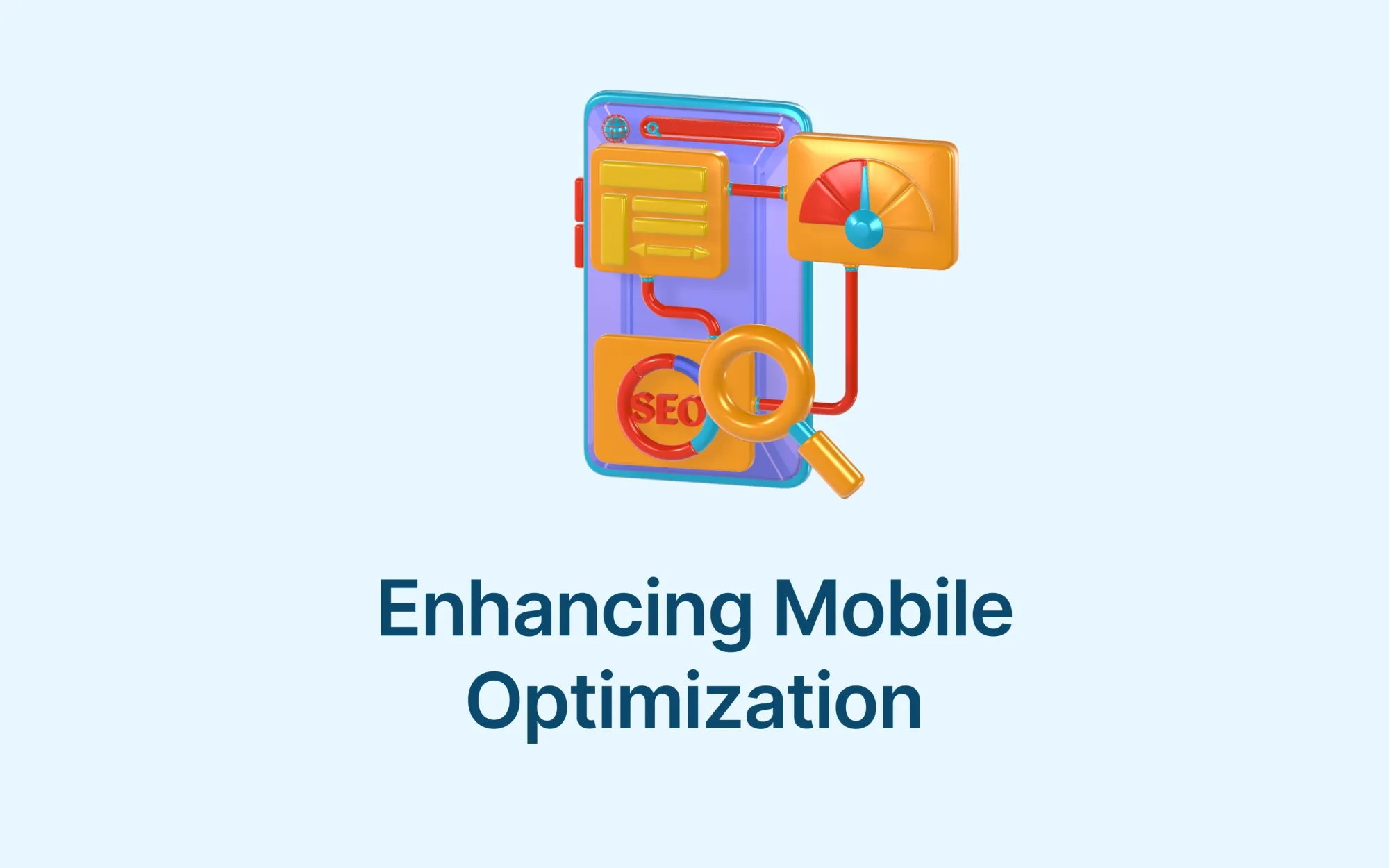
Mobile optimization means making your website look good and work well on mobile devices like smartphones and tablets. As more people use their mobile devices to browse the internet, having a mobile-friendly site has become essential.
It’s about ensuring that visitors who come to your site from mobile devices have a smooth, enjoyable experience, which is crucial for keeping them on your site longer and converting them into customers.
Mobile-First Indexing in SEO
- What is Mobile-First Indexing? Mobile-first indexing means that Google predominantly uses the mobile version of the content for indexing and ranking. Historically, the index primarily used the desktop version of a page's content, but now Google will mostly look at the mobile version of a page to evaluate its relevance to the user.
- Why is it Important? With mobile-first indexing, SEO isn't just about making your site mobile-friendly, it’s about prioritizing mobile. If your site doesn’t perform well on mobile devices, it could hurt your rankings in search results, even if the desktop version of your site is perfect. This shift underscores the importance of having a site that’s optimized for mobile in terms of both structure and content.
Improving User Experience (UX)
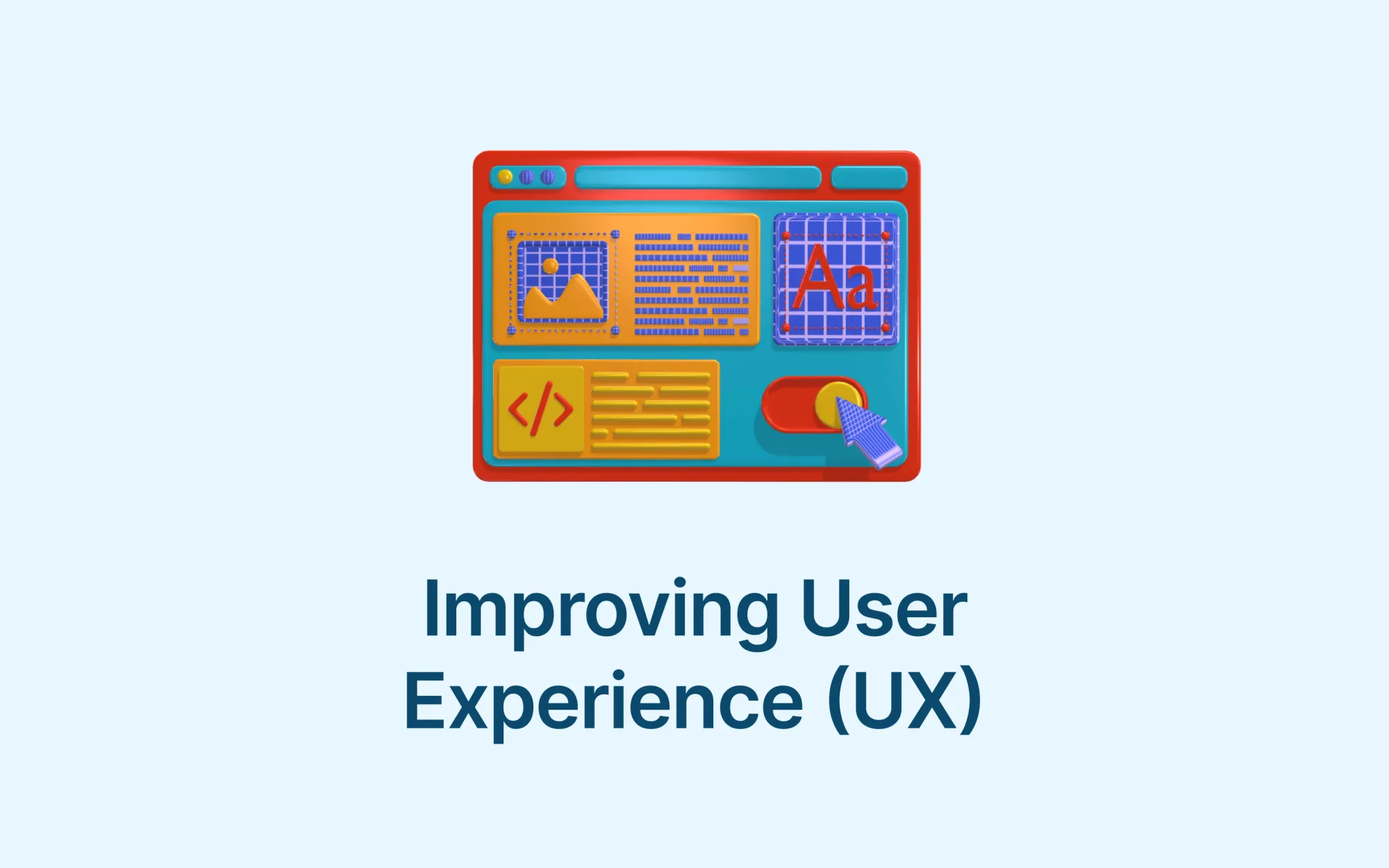
User experience (UX) refers to how a person feels when interacting with a system, such as a website, mobile app, or software application. UX is crucial because it affects how easily and enjoyably users can find the information they need and complete desired actions. A good UX leads to happier users who are more likely to stay on your site longer, engage more, and return in the future.
Elements That Impact User Experience
- Ease of Navigation: Users should be able to find what they're looking for quickly and easily. A well-organized menu, logical page hierarchy, and clear links all contribute to effective navigation.
- Page Load Speed: Websites that load quickly satisfy users immediately. Slow websites can frustrate users, leading them to leave before they even interact with your content.
- Content Readability: Use clear, concise language and break text into manageable chunks. Good formatting, such as using headings, subheadings, bullet points, and paragraphs makes content easy to scan.
- Interactive Elements: Buttons, links, and forms should be easy to use, well-placed, and function correctly. They should also be sized appropriately for both desktop and mobile users.
- Visual Design: An aesthetically pleasing design can significantly enhance user satisfaction. This includes the use of appropriate colors, fonts, and images that align with your brand and appeal to your target audience.
Speed Optimization
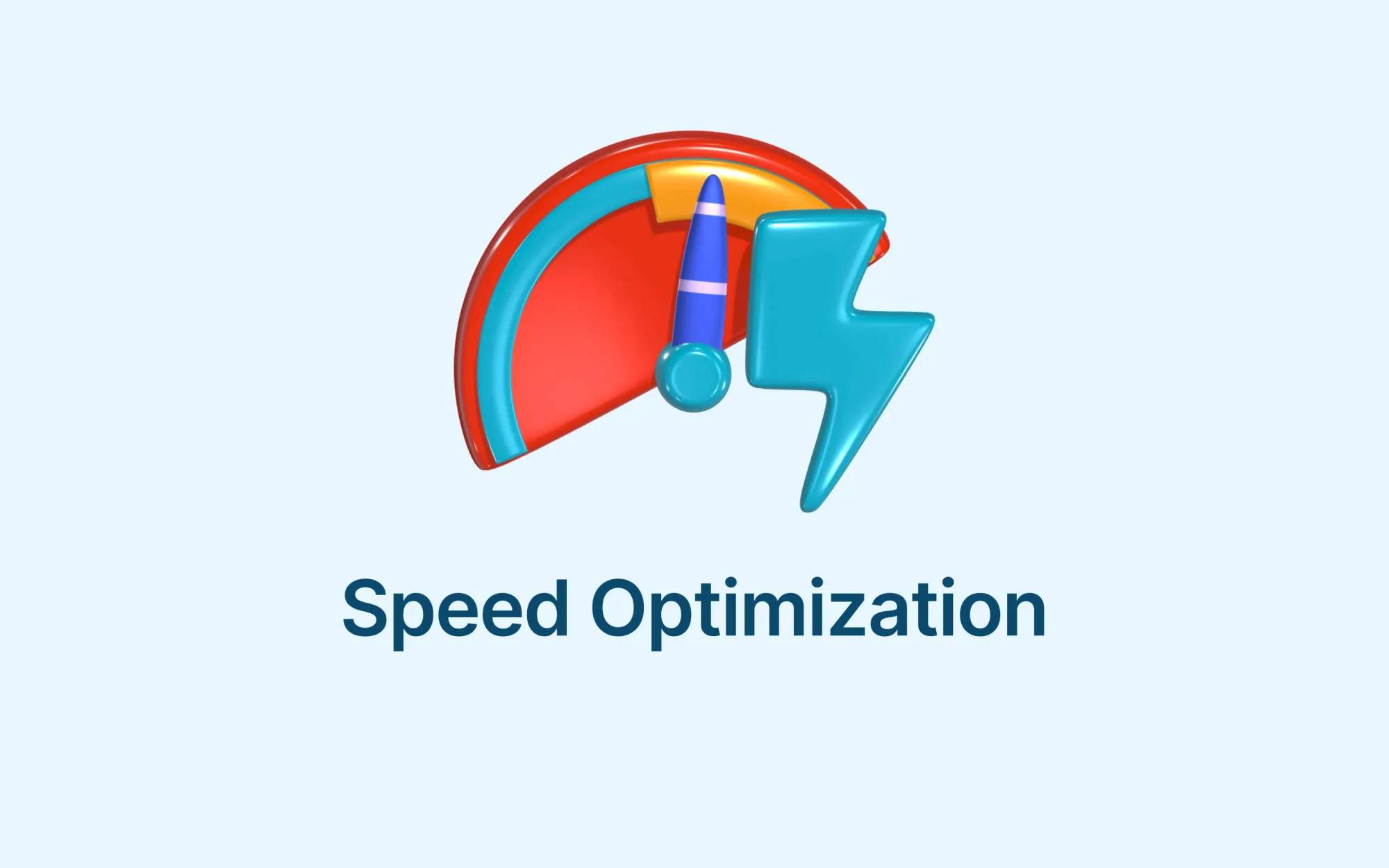
Speed optimization refers to the process of making your website load faster. In today's fast-paced digital world, users expect websites to load almost instantly. If a site takes too long to load, users are likely to leave before they even see what you have to offer. This can increase your bounce rate (the rate at which new visitors leave your site without interacting), which is not good for user experience or your site’s reputation.
Impact of Page Speed on SEO
- Search Engine Rankings: Google and other search engines want to provide the best user experience possible, which includes directing users to websites that load quickly. Faster websites are more likely to rank higher in search results because they provide a better user experience.
- User Engagement and Conversion: Faster load times improve user engagement. Users are more likely to stay on your site, explore more pages, and ultimately take actions like making purchases or signing up for information. Slow load times can frustrate users and lead them to competitors.
The Role of Linking
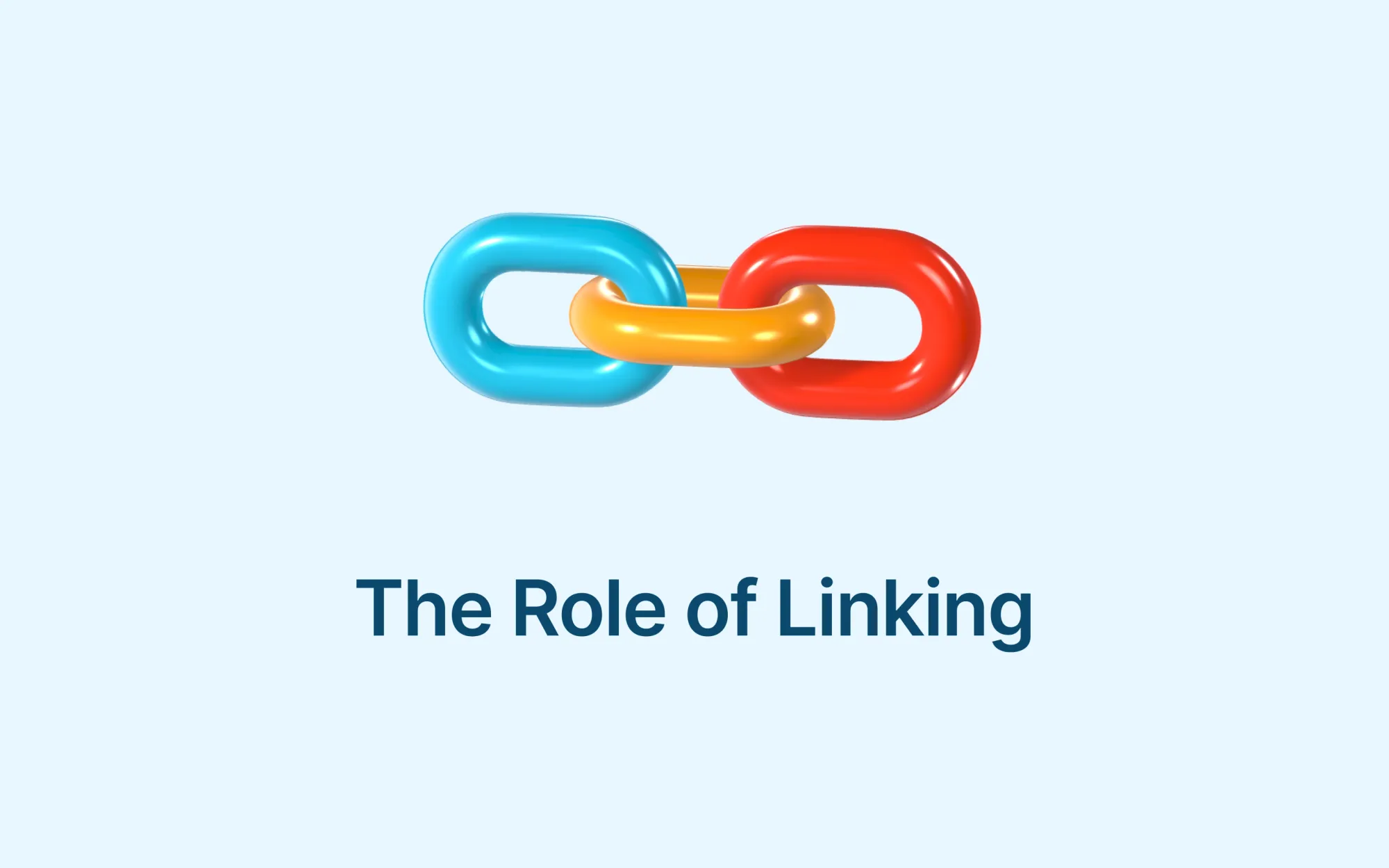
Linking in SEO refers to the practice of connecting various pages of your website together (internal linking) or having other websites link to your pages (external linking). These links help search engines understand the structure of your website and the value and relevancy of your content, influencing how high your pages rank in search results.
Internal Linking Strategies
- Navigational Ease: Internal links help users navigate your website, moving easily from one page to another based on their interests. For example, linking to a related blog post or a product page from a blog article keeps users engaged and exploring your site longer.
- Spreading Link Equity: In SEO terms, link equity refers to the value passed from one page to another through links. By linking internally, you can distribute this value throughout your site, helping to boost the ranking potential of other pages.
- Improving Site Structure: Effective internal linking helps search engines understand the structure of your site. By creating a clear hierarchy and linking between pages in a logical manner, you make it easier for search engines to crawl and index your content.
Using Backlinks
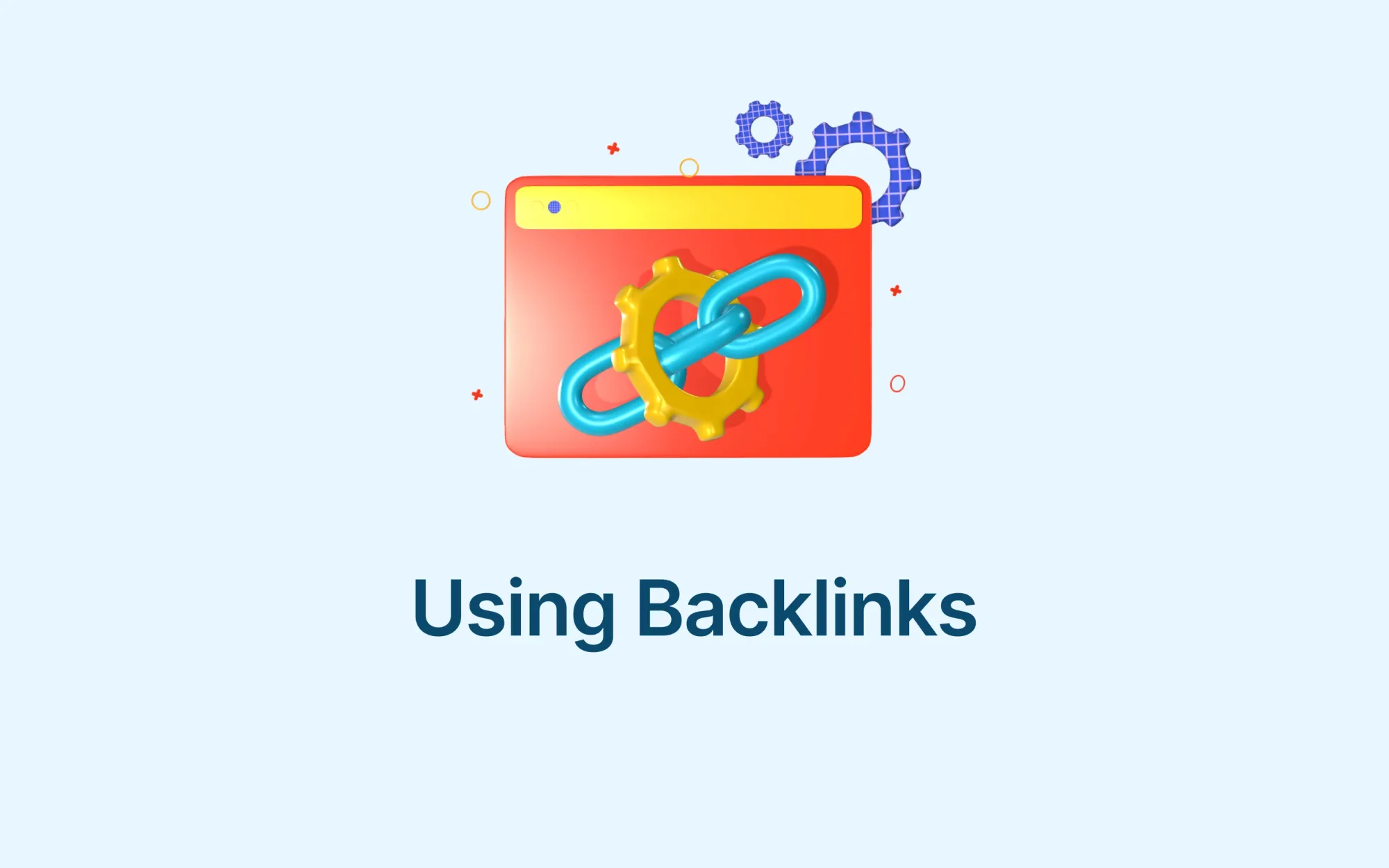
Backlinks are links from other websites that lead back to your own site. They're like digital referrals or votes of confidence from one site to another. In the world of SEO, having a high number of quality backlinks can significantly boost your website's visibility and credibility in search engine results. This is because search engines view these links as signs that your content is valuable and trustworthy.
Techniques for Earning Backlinks
- Create High-Quality Content: The cornerstone of earning backlinks is to produce content that is informative, engaging, and valuable. When you offer something unique or insightful, other websites are more likely to reference it in their own content, linking back to your site.
- Guest Blogging: Writing articles for other reputable websites in your industry can be a great way to earn backlinks. This not only puts your content in front of a new audience but also typically allows you to include a link back to your own site.
- Broken Link Building: This technique involves finding broken links on other websites and offering your content as a replacement. It’s helpful for the site owner and provides you with an opportunity to gain a backlink.
- Engage with Online Communities: Participating in forums, social media groups, or other online communities related to your industry can help you gain visibility. Sharing your knowledge and content in these spaces can lead to natural backlinks.
- Collaborations and Partnerships: Collaborating with other businesses or influencers in your industry can lead to backlinks. This could be through joint ventures, interviews, webinars, or even sharing each other's content.
Local SEO Fundamentals
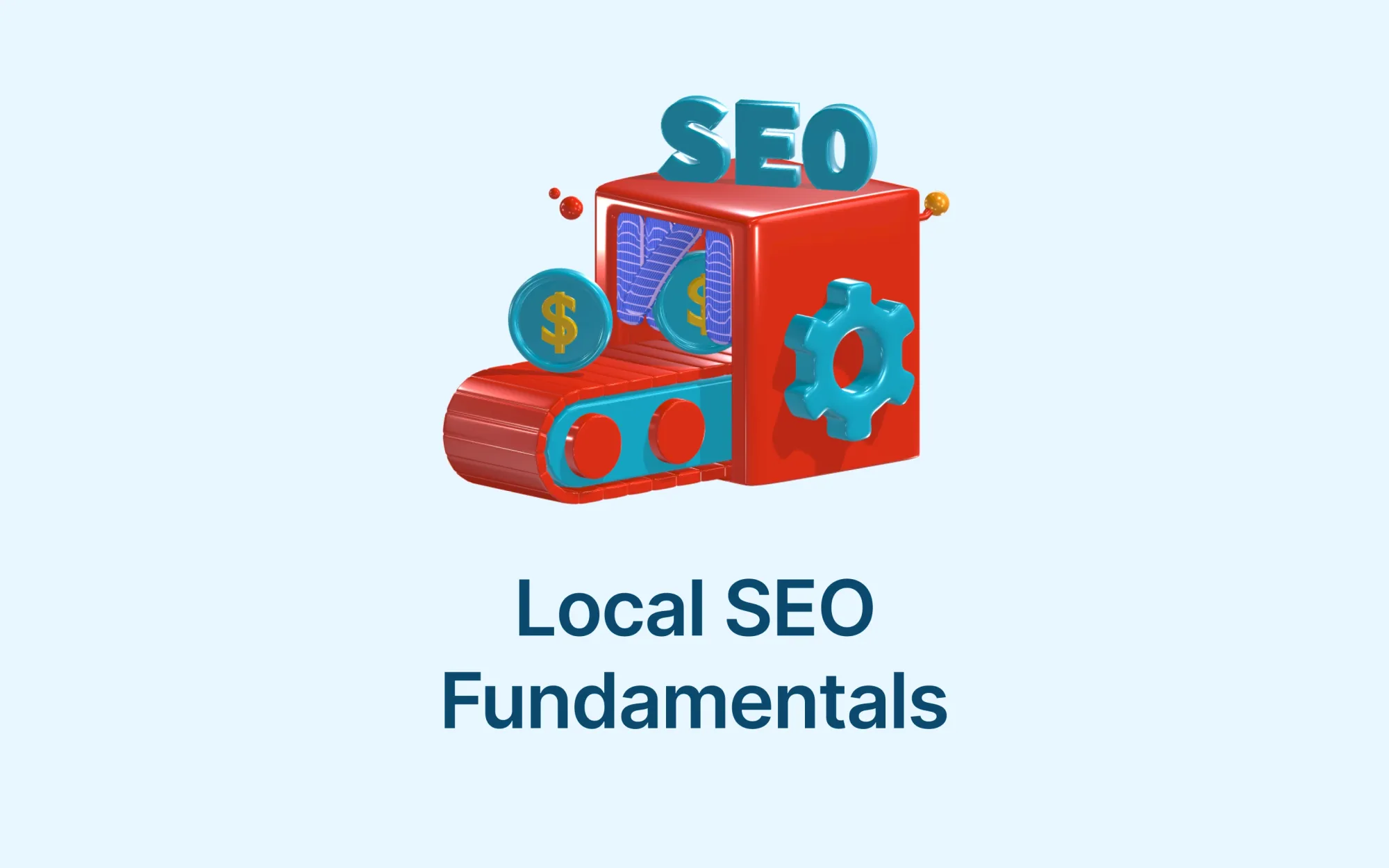
Local SEO is the practice of optimizing your online presence to attract more business from relevant local searches. These searches take place on Google and other search engines. It's especially important for brick-and-mortar businesses—like restaurants, law firms, and medical practices—as it helps potential customers in your area find you when they are searching for services or products you offer. Good local SEO can make the difference between getting noticed and being overlooked in your local market.
Importance of Local SEO for Businesses
- Visibility: Local SEO increases your visibility in search results, especially for people located near you. This means when someone searches for "best pizza place near me" or "emergency plumber in [City Name]," your business can appear prominently in those search results.
- Targeted Reach: It improves your chances of reaching potential customers who are actively looking for your products or services in your area. This targeted approach often leads to higher conversion rates as the traffic is more relevant.
- Competitive Advantage: By optimizing for local SEO, you can stand out amongst local competitors. If your business appears in local search results, you have a better chance of attracting local customers away from competitors who aren’t as well optimized.
Key Components of Local SEO
a. Google My Business:
Profile Setup and Optimization: Google My Business (GMB) is a free tool that lets you manage how your business appears on Google Search and Maps. This includes adding your business name, location, hours of operation, and photos. Optimizing your GMB profile can enhance your visibility in local search results and on Google Maps.
Reviews and Responses: Encouraging customers to leave positive reviews and responding to reviews is crucial. Reviews not only influence potential customers but also improve your local search rankings.
b. Local Citations:
Consistency Across Directories: Citations are online mentions of your business, which usually include your business name, address, and phone number. Having consistent citations across various directories like Yelp, Yellow Pages, and local business associations helps search engines verify your business and can improve your local ranking.
Quality and Relevance: It’s important to ensure your business is listed in relevant directories. Quality over quantity matters; being listed in a local chamber of commerce or a local business directory can be more beneficial than a generic, low-quality directory.
Monitoring and Reporting SEO Success
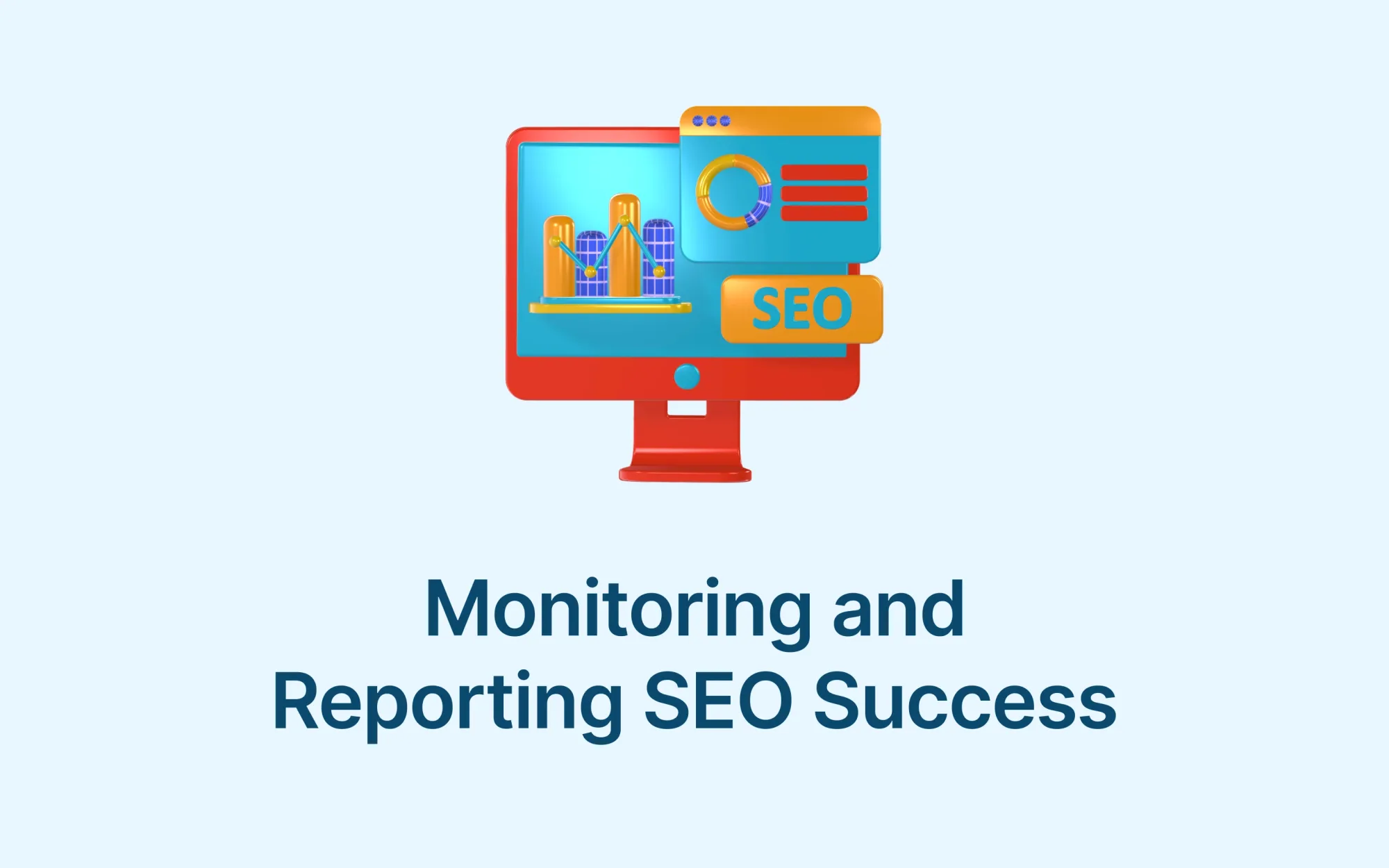
Once you've put in the effort to optimize your website for search engines, you want to know if it's actually working. Monitoring your SEO performance means tracking key data points (called "metrics") that show how well your website is doing in search results. This helps you understand what’s working, what needs improvement, and how you can adjust your strategy to achieve better results.
Key SEO Metrics to Track
- Organic Traffic: This is the number of visitors who come to your website through unpaid (organic) search results. An increase in organic traffic indicates that your SEO efforts are paying off by improving your visibility in search engines.
- Keyword Rankings: Tracking how well your target keywords are ranking on search engines is crucial. This shows how your content brief is performing and whether it's improving over time for the search terms you care about.
- Bounce Rate: This refers to the percentage of visitors who leave your website after viewing only one page. A high bounce rate might suggest that your content or user experience isn’t meeting visitors' expectations.
- Click-Through Rate (CTR): This measures how many people click on your link when it appears in search results. A high CTR means your title and meta description are compelling and relevant to users.
- Conversion Rate: This tracks how many visitors complete a desired action on your website, such as making a purchase or signing up for a newsletter. It's one of the most important indicators of whether your website is helping you achieve business goals.
- Page Load Speed: Slow page speeds can negatively impact user experience and your SEO rankings. Monitoring load times is important to ensure that your site is performing well for all users.
- Backlinks: Keep an eye on the number of quality backlinks your site is earning. The more reputable sites that link to yours, the better your website’s authority and rankings will be.
Conclusion
In simple terms, SEO is all about making your website easier to find and more attractive to both search engines and users.
By focusing on things like keyword research, on-page optimization, mobile usability, user experience, and building strong links, you can improve your site's rankings and get more visitors. It's also important to keep an eye on your progress by monitoring key metrics and using helpful tools to analyze your performance.
Frequently Asked Questions
What is an SEO content brief?
An SEO content brief is a guide that outlines the key details needed to create content optimized for search engines, like keywords and structure.
Why are SEO content briefs important?
They ensure that content is focused on relevant keywords, helping improve search rankings and drive organic traffic to your website.
What should be included in an SEO content brief?
Key elements include target keywords, content structure, word count, competitor analysis, and any specific on-page SEO requirements.
How do SEO content briefs help writers?
They give writers clear direction on what to include, ensuring the content is both valuable to readers and optimized for search engines.
Can an SEO content brief improve content performance?
Yes, by aligning content with SEO best practices, it increases the chances of ranking higher in search results and attracting more traffic.



